
Metallography Microstructure and Analysis
Scope & Guideline
Illuminating the Microstructural World of Metals
Introduction
Aims and Scopes
- Microstructural Analysis:
The journal emphasizes the characterization and evaluation of microstructures in various materials, including metals and alloys, using techniques such as electron microscopy, X-ray diffraction, and image analysis. - Process-Microstructure Relationships:
Research exploring how different manufacturing processes, such as additive manufacturing, welding, and heat treatment, affect the microstructure and properties of materials is a core focus. - Mechanical Properties Correlation:
A significant aim is to establish correlations between microstructural features and mechanical properties, enhancing the understanding of how microstructural changes influence material performance. - Innovative Analytical Techniques:
The journal encourages the application of novel analytical methodologies, including machine learning and phase field modeling, to deepen insights into microstructural evolution. - Archaeometallurgy:
Another unique contribution is the exploration of historical materials and metallurgical practices, linking contemporary analysis with archaeological findings.
Trending and Emerging
- Additive Manufacturing and Microstructure:
There is an increasing focus on understanding microstructural development in materials produced by additive manufacturing techniques, emphasizing how processing parameters influence properties. - Machine Learning Applications:
The integration of machine learning in metallography to predict microstructure and properties based on processing conditions is gaining traction, showcasing the intersection of AI and materials science. - High-Entropy Alloys:
Research on high-entropy alloys is emerging as a significant trend, focusing on their unique properties and the complex microstructural behaviors that result from their composition. - Sustainability and Recycling:
With a growing emphasis on sustainability, studies related to the recycling of materials and the development of eco-friendly processing techniques are becoming more prevalent. - Dynamic and In-Service Conditions:
There is a shift towards studying materials under dynamic loading and operational conditions, reflecting a broader interest in real-world applications and performance.
Declining or Waning
- Traditional Metallography Techniques:
There has been a noticeable decrease in papers focused solely on traditional metallography methods, as newer analytical techniques gain popularity and acceptance. - Basic Mechanical Testing:
Research centered on basic mechanical properties without microstructural analysis is waning, as the field shifts toward integrated approaches that combine microstructural and mechanical evaluations. - Static Corrosion Studies:
While corrosion studies remain relevant, the focus on static corrosion testing has diminished in favor of dynamic and in-service corrosion behavior assessments. - Generalized Material Studies:
Papers that broadly address material properties without a specific focus on microstructural analysis or processing relationships are less frequently published, indicating a trend toward more specialized and targeted research.
Similar Journals
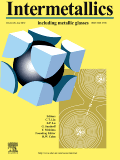
INTERMETALLICS
Exploring the Depths of Intermetallic InnovationINTERMETALLICS, a prestigious journal published by ELSEVIER SCI LTD in the United Kingdom, has been a vital resource in the fields of Materials Science, Mechanical Engineering, and Chemistry since its inception in 1993. Renowned for its rigorous peer-review process and commitment to high-quality research, this journal enjoys an impressive position within the top quartile (Q1) rankings of its categories, signifying its influence and esteem in the academic community. With a particular emphasis on the study of intermetallic compounds and their applications, INTERMETALLICS attracts groundbreaking research and innovative contributions that push the boundaries of knowledge in metals and alloys, as well as mechanics of materials. Researchers looking for a platform to disseminate cutting-edge findings will find this journal an exemplary choice, further enhanced by its commendable Scopus rankings that illustrate its widespread recognition and relevance. Though it does not currently offer Open Access options, the journal remains committed to advancing the field through selective publication of impactful research, making it an essential reference for researchers, professionals, and students alike interested in the dynamic interplay between materials and engineering.

TRANSACTIONS OF THE INDIAN INSTITUTE OF METALS
Pioneering discoveries in the world of metals.TRANSACTIONS OF THE INDIAN INSTITUTE OF METALS is a premier journal published by Springer India, dedicated to the field of metallurgy and materials science. Established in 1969, this journal serves as a vital platform for researchers and professionals to disseminate their findings on metals and alloys, showcasing innovative studies and experimental techniques. With an impressive impact factor and categorized in the Q2 quartile for metals and alloys as of 2023, it ranks 70 out of 176 in its field according to Scopus, placing it in the 60th percentile. The journal maintains a robust reputation for fostering academic excellence, thus attracting contributions from both established and emerging scholars. Though not an open access publication, its well-curated content remains a crucial resource for advancing knowledge and technology in metallurgy. The journal's extensive operational history, particularly during notable converged years, underscores its enduring significance in the scientific community.

Korean Journal of Metals and Materials
Advancing the Frontiers of Metals and Materials ScienceWelcome to the Korean Journal of Metals and Materials, a premier publication dedicated to advancing research in the interdisciplinary fields of metals and materials science. Published by the Korean Institute of Metals and Materials, this journal aims to foster the dissemination of innovative findings and significant developments across various domains, including electronic, optical, and magnetic materials, metals and alloys, as well as modeling, simulation, and surface coatings. With a commendable Q3 quartile ranking in several relevant categories as of 2023, it serves as a vital resource for researchers, professionals, and students interested in the latest scientific trends and technological applications. The journal has successfully converged from 2007 to 2024, showcasing a rich archive of knowledge. Engaging with this publication gives readers the opportunity to stay updated with critical advancements and enhances collaboration within the vibrant materials science community. Access is available through various platforms, ensuring that our content is widely accessible to all those striving for excellence in the field.
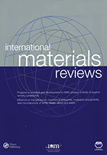
INTERNATIONAL MATERIALS REVIEWS
Exploring the Frontiers of Materials ScienceINTERNATIONAL MATERIALS REVIEWS, published by SAGE Publications Inc, is a leading journal dedicated to the comprehensive analysis of contemporary research in the fields of materials chemistry, mechanical engineering, mechanics of materials, and the study of metals and alloys. With an impressive impact factor and a Q1 ranking across multiple categories such as Materials Chemistry and Mechanical Engineering in 2023, it ranks amongst the top journals for innovative materials research. The journal has a long-standing history since its inception in 1987 and continues to serve as a crucial resource for academics and professionals alike. Although it is not open access, it is renowned for its rigorous peer-review process and its commitment to disseminating high-quality materials science research globally. Researchers, students, and industry professionals benefit greatly from the journal's insightful reviews, both for the advancement of theoretical knowledge and practical applications within the fast-evolving materials field.
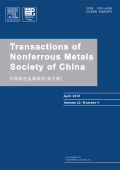
TRANSACTIONS OF NONFERROUS METALS SOCIETY OF CHINA
Driving progress in nonferrous metals research and applications.TRANSACTIONS OF NONFERROUS METALS SOCIETY OF CHINA, published by Elsevier, is a premier academic journal that serves as a vital platform for researchers and professionals specializing in materials science, condensed matter physics, geotechnical engineering, and engineering geology. Established in 1994, this esteemed publication has maintained a robust focus on the latest developments in the nonferrous metals sector, reflecting its significant impact in the field with a Q1 categorization across multiple disciplines. With impressive Scopus rankings—placing it in the top 20% of journals in relevant categories—this journal is recognized for its quality and rigor, providing critical insights into metals and alloys, materials chemistry, and their applications. The non-open access format ensures a dedicated readership among professionals and academics seeking substantial and authoritative research articles. By fostering knowledge exchange, the journal strives to advance the understanding and application of nonferrous metals, making it an essential resource for anyone involved in material innovations and engineering solutions.

Praktische Metallographie-Practical Metallography
Driving Progress in Condensed Matter and Materials SciencePraktische Metallographie - Practical Metallography is a distinguished journal published by WALTER DE GRUYTER GMBH that has been a pivotal resource in the fields of condensed matter physics and materials science since its inception in 1969. Featuring an ISSN of 0032-678X and E-ISSN of 2195-8599, this journal focuses on the practical aspects of metallography, providing insights into the analysis of metals and alloys, and advancing the understanding of electronic, optical, and magnetic materials. Although not an open-access publication, it plays a crucial role in disseminating niche yet impactful research, illustrated by its current quartile rankings in several categories, including Q4 in Mechanics of Materials and Q4 in Metals and Alloys. With an emphasis on facilitating knowledge exchange among professionals and academics, Praktische Metallographie aims to foster innovation and enhance practical applications in metallurgy, making it an essential journal for researchers and practitioners committed to advancing this critical field.
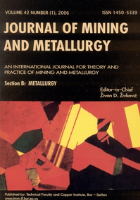
Journal of Mining and Metallurgy Section B-Metallurgy
Innovating the future of mining and metallurgy.Journal of Mining and Metallurgy Section B-Metallurgy is a prominent open-access journal published by the Technical Faculty, Bor-Serbia. Established in 2002, the journal has become a vital platform for disseminating high-quality research in the fields of metallurgy, geotechnical engineering, and materials sciences. With an E-ISSN of 2217-7175, the journal has successfully converged its publication years from 2007 to 2024, indicating its commitment to ongoing academic discourse. The journal is currently ranked Q3 in multiple categories including Geotechnical Engineering and Engineering Geology, Materials Chemistry, Mechanics of Materials, and Metals and Alloys, reflecting its importance in academic research and professional practice. With a Scopus rank that positions it within the 30th percentile across various related disciplines, the Journal of Mining and Metallurgy Section B-Metallurgy serves as an invaluable resource for researchers, professionals, and students who seek to explore cutting-edge advancements in metallurgy and materials science. It provides vital insights that contribute to the development and innovation in these essential fields.
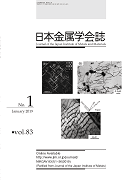
Journal of the Japan Institute of Metals and Materials
Advancing metallurgy and materials science since 1937.Journal of the Japan Institute of Metals and Materials (ISSN: 0021-4876, E-ISSN: 1880-6880) serves as a vital academic platform under the esteemed auspices of the Japan Institute of Metals & Materials. This journal, with a rich publication history dating back to 1937, focuses on advancing knowledge in the fields of metallurgy, materials science, and engineering, making it an important resource for researchers, professionals, and students alike. Although the journal has been categorized in Q4 quartiles across several subject areas, including Condensed Matter Physics and Materials Chemistry, it plays a critical role in disseminating essential findings and fostering discussion regarding innovations in metal and materials research. Notably, the journal operates without open access, which encourages targeted readership engagement through its curated content. Based in Japan, it continues to contribute significantly to the academic community by bridging the gap between scientific inquiry and practical application in materials technology.

METALS AND MATERIALS INTERNATIONAL
Unveiling the potential of metals and materials for tomorrow's technologies.METALS AND MATERIALS INTERNATIONAL, published by the Korean Institute of Metals and Materials, is a prestigious journal dedicated to the advancement of research in the fields of materials science and engineering. With an ISSN of 1598-9623 and a robust e-ISSN of 2005-4149, this journal has established itself as a crucial platform for disseminating innovative findings and key advancements that span condensed matter physics, materials chemistry, mechanics of materials, and the technology of metals and alloys. Its Q1 rankings in multiple categories attest to its high impact and relevance in the academic community, placing it among the top journals in its fields with Scopus rankings that reflect a strong international footprint. Here, researchers, professionals, and students can access cutting-edge research and insights, fostering collaboration and exploration of new materials and their applications. With a commitment to excellence and a convergence of knowledge from 1996 to 2024, METALS AND MATERIALS INTERNATIONAL continues to enhance our understanding of materials and their transformative impact on technology and engineering.

KOVOVE MATERIALY-METALLIC MATERIALS
Shaping the Future of Materials EngineeringKOVOVE MATERIALY-METALLIC MATERIALS, published by REDAKCIA KOVOVE MATERIALY, is a prominent journal embedded within the field of materials science, focusing particularly on metallic materials. With a history dating back to 1968, this Slovakian journal has made significant contributions to the understanding of materials chemistry, mechanical engineering, and the mechanics of materials. While currently classified in the Q4 category for Materials Chemistry and Mechanical Engineering, and Q3 for Metals and Alloys, it aims to provide a platform for high-quality research and novel findings in these domains. Furthermore, the journal is indexed within Scopus, reflecting its engagement with the global scientific community and its role in disseminating pivotal studies. Researchers, professionals, and students will find crucial insights and developments in the field, making it a valuable resource for those seeking to enhance their understanding of metallic materials and their applications.